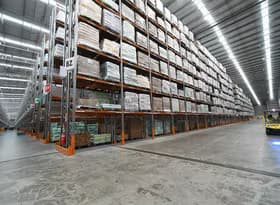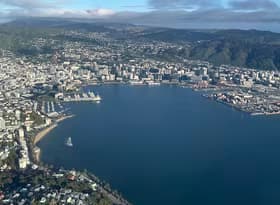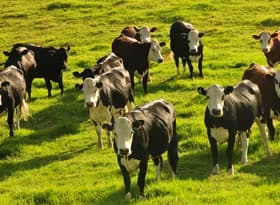Our recent update of the Infometrics Regional Economic Profile provides us with another year of detailed data across regional economies to examine. Over the March 2024 year, our analysis shows that rural economies had the strongest economic activity growth, with the primary sector a key part of this growth story.
It’s important to note that these figures pre-date the harsher economic downturn seen over the following two quarters in the middle of the 2024 calendar year. Stats NZ data currently shows a 2.0% loss of activity nationally over the 6 months to September 2024. We’re seeing these results in our Quarterly Economic Monitor, with the next quarterly update reinforcing the tough times over the last few quarters.
Every update packs a huge amount of new data, and this analysis is designed to provide a high-level view of some of the key trends we’ve noticed in the 2024 data.
Rural growth took top spot in 2024
Over the 12 months to March 2024, the Infometrics Regional Economic Profile shows rural economies grew an average of 2.2%pa. This growth was ahead of national average growth of 1.4%pa.
Metro areas growth was in-line with the national average result, with a 1.5%pa lift over the March 2024 year. Provincial areas saw more sluggish growth, of 0.8%pa.
There were some common themes driving the results across metro, provincial, and rural areas, although the importance different considerably. Unsurprisingly, stronger primary sector outcomes saw the agriculture, forestry and fishing industry as the largest contributor to GDP growth for both provincial and rural economies in 2024.
Healthcare was also an important driver, although to varying degrees. Healthcare was the largest positive contributor to metro GDP growth in 2024, as expected due to health services being more concentrated in urban centres. This industry was the second-largest positive contributor to provincial economic growth, and the fifth-largest for rural economic growth.
On the downside, manufacturing was a leading negative contributor to growth – the largest negative industry for metro areas and the second-largest for provincial and rural economies. This decline makes sense, with lower demand across the economy and previously higher inventories needing to be used up meant the demand for more production was limited. Retail was also a common negative contributor, as high interest rates limited household spending. Retail was the largest negative contributor for provincial and rural economies and the third-largest for metro areas.
Transport and accommodation and food services were also in the top five across areas, at a mix of third, fourth, and fifth largest negative growth contributors across metro, provincial, and rural areas.
Interestingly, although retail, accommodation and food services, and transport were all important negative contributors to growth across metro, provincial, and rural areas, arts and recreation was the fifth largest positive contributor to growth in metro and provincial economies. All these industries are tourism-related, so why the difference?
Higher arts and recreation GDP was likely driven by a further recovery in international tourism numbers, with international arrivals over 2024 rising back to 85% of pre-pandemic levels. The bulk of these travellers were in New Zealand for a holiday, and international visitors often spend more (relative to domestic travellers) on activities that are classed in the arts and recreation industry. Bungee jumping, adventure tourism, caving, jet boating, white water rafting, and more fit within this category.
At the same time, lower domestic spending has clearly hit retail, accommodation and food services, and transport. These industries are all important parts of domestic tourism too, as well as being driven by general household consumption, from households spending at shops, bars, cafes, and restaurants. Domestic corporate and government travel was lower in 2024 too, lower transport and accommodation activity.
Metro growth highest over last 24 years
Since 2000, metro areas have seen the strongest annual average growth in GDP, at 2.9%pa. That growth supported national growth of around 2.7%pa.
Provincial growth since 2000 has averaged 2.4% a year, and rural growth has been slower at just 1.2%pa.
Professional services industry growth was the key driver of the strong growth in metro areas, with annual average growth of 4.0%pa! This industry was also the third largest contributor to overall growth for provincial and rural growth.
Agriculture was the largest contributor to provincial growth, but was only the second largest contributor for rural growth. Instead, the largest driver of rural growth since 2000 has been construction.
REP refresh includes more small area functionality
We’ve recently reconfigured the way we present insights for small areas – areas below territorial authority level, like SA3s, SA2s, urban areas, and community boards. A new map on the overview page helps you visualise the geography of small areas and enables you to launch a standalone profile for every small area. All public areas include population data for small areas.
For subscribing clients with small area access, we’ve retained data on GDP, employment, and businesses at a small area level (including industry breakdowns, where available), and also added new indicators including comparative advantage and land cover. Instead of being concentrated in one small area section, our small area data is now spread throughout the REP, in the sections for each indicator.
We keep hearing that better access to more local information is important to making decisions and understanding the unique drivers of economies across different areas – these changes are designed to bring more of those insights to the fore.










